Murals are expansive and often larger-than-life masterpieces that grace public spaces, buildings, and interiors, serving as powerful conduits for storytelling, cultural celebration, and societal commentary.
With roots dating back to ancient civilizations, murals have evolved into a vital facet of contemporary artistic expression.
Their monumental scale not only invites viewers to immerse themselves in the artwork but also transforms the very spaces they inhabit.
From vivid urban street art to historically significant depictions, murals encompass a diverse range of styles, showcasing the enduring capacity of art to captivate, educate, and inspire communities worldwide. Read this article fully and see how we define murals.
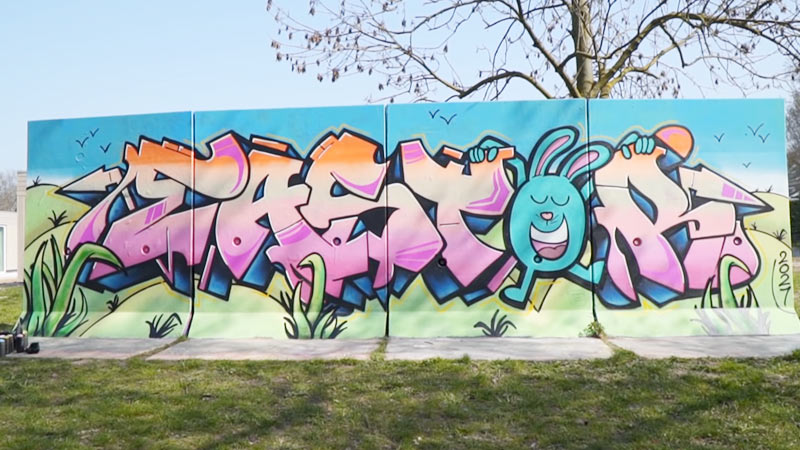
What Is a Mural in Art? -Definition & Key Aspects
A mural in art is a large-scale, often immersive, and public work of visual art that is typically painted or applied directly onto a wall or surface, such as a building, interior wall, or public space.
Murals have been an integral part of human artistic expression for centuries, with roots dating back to ancient civilizations.
They serve as a powerful means of communication, storytelling, and expression, capable of conveying a wide range of messages and emotions.
Here are some key aspects of murals in art:
Size and Scale
The sheer size and scale of murals are often breathtaking. These larger-than-life canvases offer artists an expansive platform for their creativity, allowing them to experiment with proportions and perspectives that are simply not achievable on smaller surfaces.
The immensity of murals can immerse viewers in the art, enveloping them in a visual experience that engages their senses and emotions.
Public Art
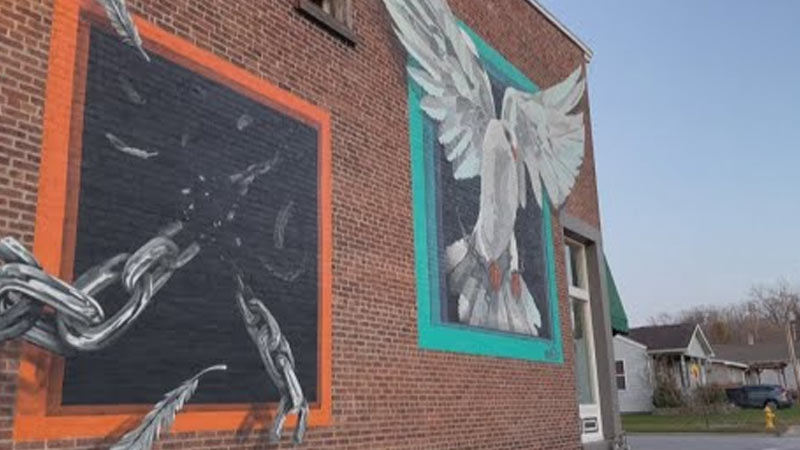
Murals are a form of public art that can democratize creativity. Unlike art confined to galleries or museums, murals are free for anyone to enjoy and do not require an admission fee.
This accessibility is one reason why they are often used as a means of bringing art to underserved communities and fostering a greater sense of cultural inclusivity.
Storytelling and Expression
Murals are an effective storytelling medium. Artists can use a combination of imagery and symbolism to communicate complex narratives, social issues, or personal stories.
These narratives can be deeply emotional, political, or celebratory, allowing artists to engage with the viewers on both intellectual and emotional levels.
Community Engagement
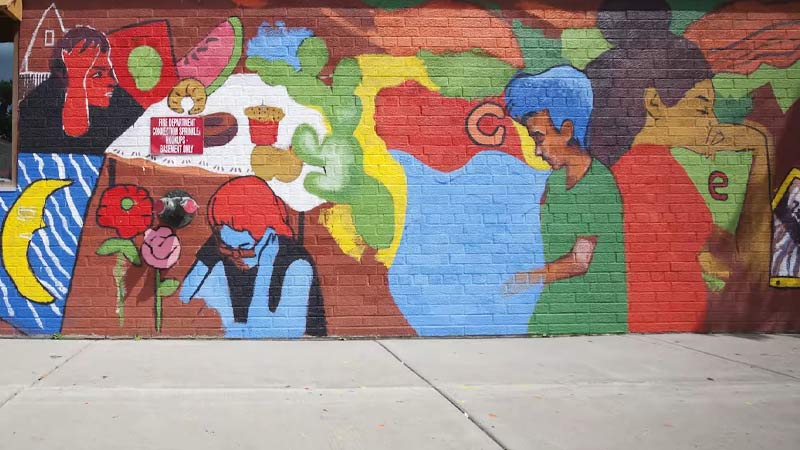
Murals have the unique ability to engage communities in their creation. In many cases, mural projects involve collaboration between artists and the local community, encouraging residents to actively participate in the artistic process.
This involvement fosters a sense of ownership and pride in the artwork, strengthening community bonds.
Cultural and Historical Significance
Murals often serve as historical records, preserving cultural and historical moments. They can depict important figures, events, and cultural symbols, providing a visual archive of a community’s heritage.
Murals also celebrate diversity and promote cultural exchange by showcasing various cultural elements within a single artwork.
Aesthetic Beauty
Murals are celebrated for their visual appeal and artistic merit. Artists skillfully use techniques such as trompe-l’oeil (optical illusion), vibrant color palettes, and intricate details to create visually stunning and aesthetically pleasing works.
Murals can transform drab urban spaces into vibrant showcases of artistic excellence.
Street Art and Graffiti
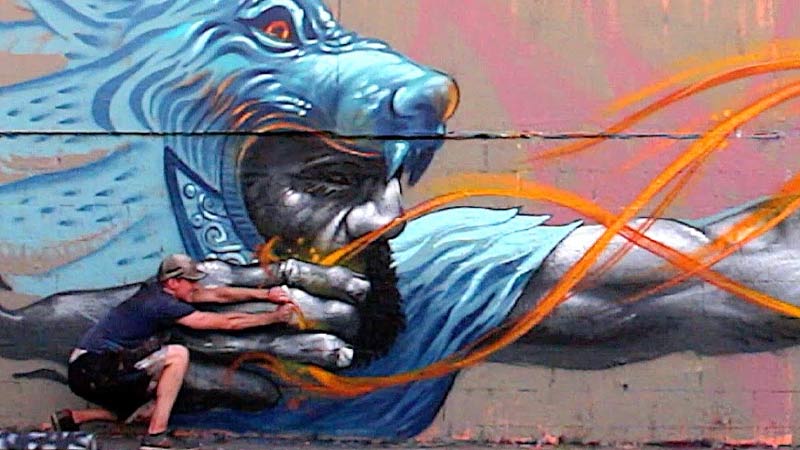
Street art murals, often associated with graffiti, have gained recognition as a contemporary art form.
While traditional murals may focus on themes and narratives, street art can be more abstract or convey social and political messages.
Street artists use murals to challenge conventions and provoke thought, often in unconventional locations.
Preservation and Restoration
The preservation and restoration of murals are crucial for maintaining their cultural and historical significance.
Organizations and art enthusiasts are dedicated to safeguarding these artworks against environmental damage, vandalism, or fading over time.
Restoration efforts ensure that murals retain their original beauty and continue to tell their stories to future generations.
Mural Styles
Murals come in a wide range of styles, reflecting the diverse artistic tastes and cultural influences of different regions and time periods. Here are some of the most prominent mural styles:
Realism and Trompe-l’oeil
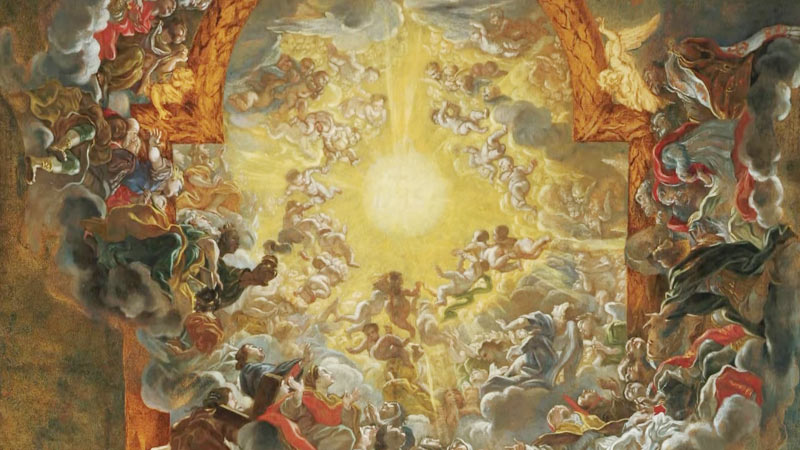
Realistic murals aim to replicate the appearance of objects and scenes as accurately as possible.
Trompe-l’oeil, a subset of realism, uses optical illusion techniques to make two-dimensional murals appear three-dimensional, often fooling the viewer into believing that objects depicted are real.
Abstract
Abstract murals break away from representing the physical world in a literal sense. They often use shapes, colors, and forms to convey emotions, ideas, or concepts rather than recognizable objects or scenes.
Impressionism: Impressionist murals capture the fleeting effects of light and color, often featuring loose brushwork and a focus on atmospheric effects. This style is known for its ability to convey mood and emotion.
Cubism
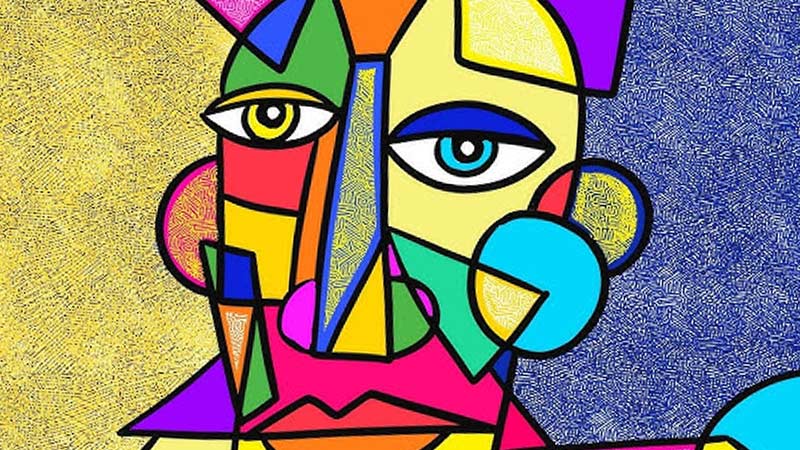
Cubist murals, inspired by the art movement founded by Picasso and Braque, depict subjects from multiple viewpoints at once. They often feature fragmented forms and geometric shapes.
Surrealism
Surrealist murals explore the dreamlike and fantastical aspects of reality. They often incorporate unexpected and bizarre juxtapositions to provoke thought and emotions.
Minimalism
Minimalist murals embrace simplicity, using a limited color palette and basic shapes to create a sense of purity and simplicity. Less is more in this style, where every element is carefully considered.
Pop Art
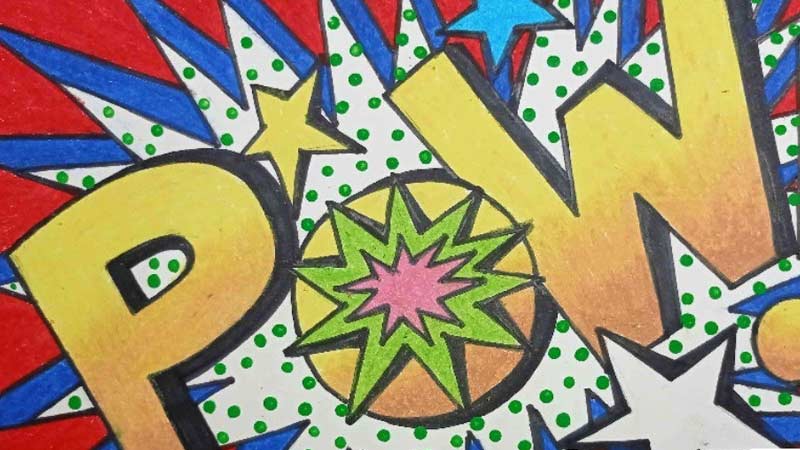
Pop art murals draw inspiration from popular culture and consumerism. They often feature bold colors, iconic symbols, and references to mass-produced products and media.
Historical and Narrative
These murals tell stories or depict historical events, figures, or cultural narratives. They are often used to educate and celebrate the past, conveying a sense of heritage and tradition.
Graffiti and Street Art
Street art murals often feature vibrant, urban-inspired designs. They may include stylized lettering, political or social messages, and a raw, rebellious aesthetic. Street art has gained recognition as a contemporary art form.
Mosaic
Mosaic murals are composed of small pieces of colored glass, tile, or other materials arranged to form a larger image. They are known for their intricate and often decorative patterns.
Geometric and Optical Art
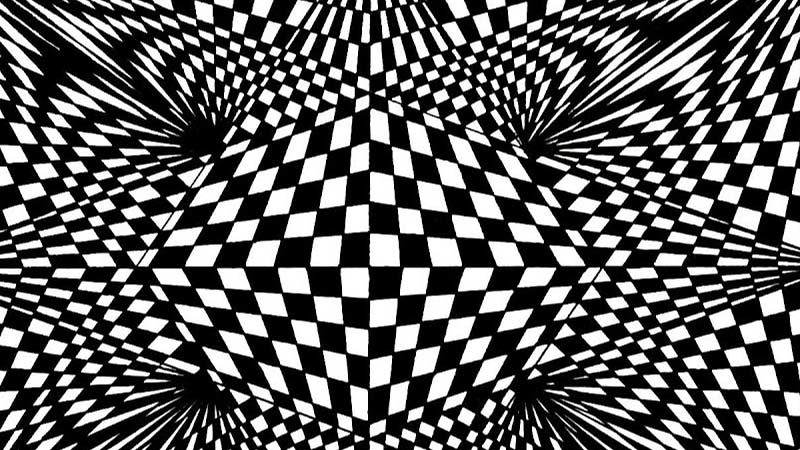
These murals use geometric shapes and optical illusions to create visually striking patterns and effects. They often play with the viewer’s perception and sense of movement.
Landscape and Nature
Murals in this style celebrate the beauty of the natural world, depicting landscapes, flora, and fauna. They often bring the outdoors inside, creating a sense of serenity and connection to nature.
Fantasy and Sci-Fi
Fantasy and science fiction murals transport viewers to otherworldly realms, often featuring mythical creatures, futuristic technology, and imaginative landscapes.
Portraiture
Portraiture murals focus on depicting human subjects, often with a high degree of realism. They can honor historical figures, celebrate community members, or convey personal stories and emotions.
Social and Political Commentary
These murals use art as a platform for social and political expression. They may address issues such as inequality, injustice, or advocacy for change.
Types of Murals
Murals come in various types, each with its own purpose, style, and context.
Here are the common types of murals:
Public Art Murals
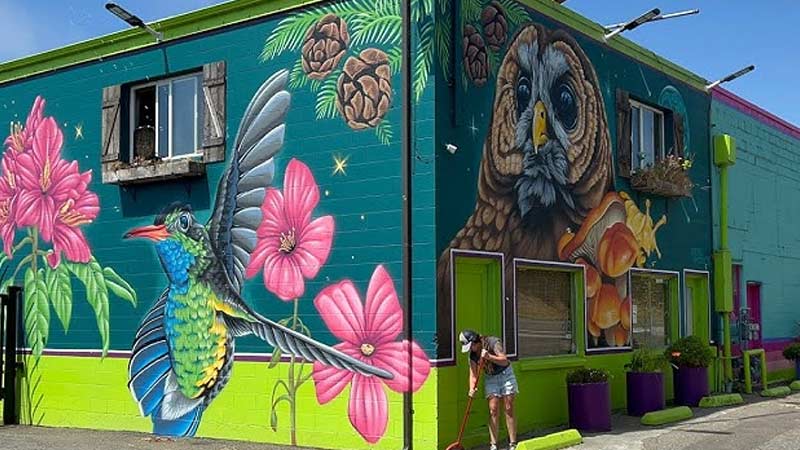
These murals are created in public spaces and are often commissioned by local governments, organizations, or businesses to beautify and enhance the urban environment. They can depict a wide range of subjects, from historical events to abstract designs.
Historical Murals
Historical murals focus on depicting events, figures, or scenes from the past. They serve as a visual record and educational tool, helping communities connect with their history and heritage.
Community Murals
Community murals involve collaboration between artists and local residents. They often reflect the collective identity, values, and aspirations of a community.
These murals may be created in schools, community centers, or other gathering places.
Street Art Murals
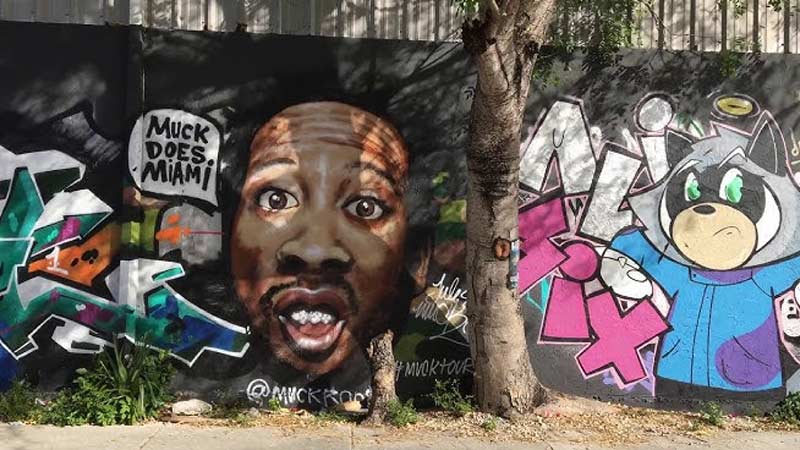
Street art murals are often created without formal permission and are associated with urban culture and graffiti.
They can convey political messages, social commentary, or personal expressions. Some street artists gain international recognition for their work.
Religious and Spiritual Murals
Found in places of worship like churches, temples, and mosques, these murals depict religious figures, stories, and symbols.
They serve both as a form of religious expression and a means of teaching religious narratives.
Commercial Murals
Businesses often commission murals to promote their products, services, or brand image. These murals can be found in retail spaces, restaurants, and corporate offices.
Educational Murals
Educational institutions use murals to create a visually stimulating learning environment. These murals may depict scientific concepts, historical timelines, or literary themes.
Children’s Murals
These murals are specifically designed for kids and often feature colorful and whimsical designs. They are commonly found in schools, pediatric clinics, and children’s bedrooms.
Environmental Murals
Environmental murals raise awareness about ecological issues, conservation efforts, and the importance of nature. They often feature endangered species, natural landscapes, or calls to action.
Portrait Murals
Portrait murals focus on depicting individuals, often in a realistic style. They can honor historical figures, celebrities, or local heroes and are often found in public spaces.
Abstract and Contemporary Murals
These murals emphasize artistic expression and experimentation with color, form, and texture. They may not represent recognizable objects or scenes but instead convey emotions or abstract concepts.
Interactive Murals
Interactive murals invite viewer participation. They may include elements like hidden messages, optical illusions, or parts that can be touched or manipulated.
Ceiling Murals (Frescoes)
Ceiling murals, also known as frescoes, adorn the ceilings of buildings. Famous examples include Michelangelo’s work in the Sistine Chapel. These murals often depict religious or mythological narratives.
Mosaic Murals
Mosaic murals are created by arranging small pieces of colored glass, tile, or other materials to form an image or pattern. They are known for their intricate and decorative designs.
Temporary Murals
Some murals are designed to be temporary, such as those created for art festivals or special events. They may be painted over or removed after a certain period.
3D Murals
These murals use optical illusion techniques to create a three-dimensional effect, making the artwork appear to pop out from the wall or surface.
FAQS
Can anyone create a mural?
While creating a mural doesn’t necessarily require formal training, it does demand artistic skill and an understanding of the techniques involved.
How long does it take to create a mural?
The time needed to complete a mural varies widely based on its size, complexity, and the artists involved.
Some small murals can be finished in a few days, while extensive, highly detailed murals may take several weeks or even months to complete.
What materials are used in mural creation?
Muralists use a range of materials, including acrylic or spray paint for wall murals, tiles and glass for mosaic murals, and various tools and equipment like scaffolding or ladders.
Do murals have to be permanent?
While many murals are intended to be permanent, some are designed as temporary installations for art festivals or events.
Are there any legal considerations for creating murals?
Yes, there can be legal considerations, especially for street art and public murals.
To Recap
In art, murals stand as captivating giants, transcending the confines of galleries to embrace the world at large. These expansive, public canvases are a testament to human creativity, serving as windows into history, culture, and emotion.
Murals encompass a diverse tapestry of styles, from the vibrant street art adorning urban landscapes to the solemnity of historical depictions that anchor communities to their past.
They unite communities, spark dialogue, and provoke thought. In their myriad forms, murals continue to exemplify art’s enduring power to educate, celebrate, and inspire.
As testaments to human imagination, they remind us that art knows no bounds, beckoning us to explore, engage, and be enriched by the stories they tell and the beauty they unfurl.
Leave a Reply